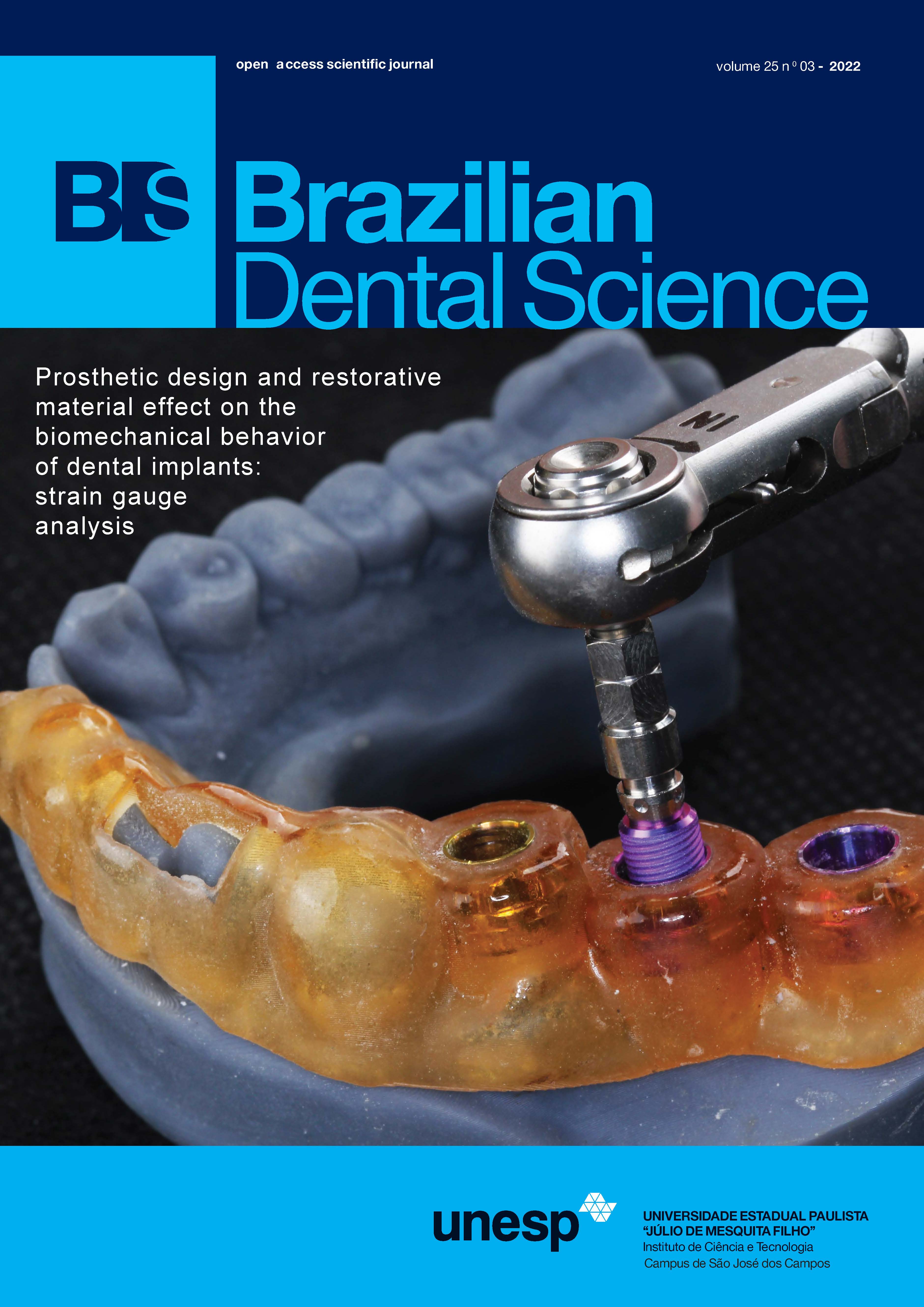Color and translucency of repressed lithium disilicate glass ceramic subjected to multiple firings and aging
Color and translucency of ceramics
DOI:
https://doi.org/10.4322/bds.2022.e3226Abstract
Objective: The aim of this study is to evaluate the effect of multiple firings and aging on color and translucency of
repressed lithium disilicate glass ceramic (IPS e.max press). Material and Methods: A total of 42 lithium disilicate
discs (15 mm x 1 mm) were fabricated using heat press technique following the manufacturers’ instructions.
They were divided into three groups according to the number of pressing cycles (n=14): Group P1 (pressed
once), Group P2 (pressed twice) and Group P3 (pressed thrice). Each group was subdivided into two subgroups
according to the number of firing cycles (n=7): Subgroup (F2): 2 firing cycles, Subgroup (F4): 4 firing cycles.
Then all specimens were subjected to thermocycling. Color and translucency parameter (TP) were evaluated by
spectrophotometer; after pressing, firing (E1: color difference between pressing and firing) and aging (E2:
color difference between pressing and aging). Results: E1 for subgroup F2 (3.38) showed statistically significant
lower value than E1 for subgroup F4 (3.94). After aging, group P3 showed the statistically significant highest
E2 (6.41). A statistically significant lower E2 was found with group P2 (5.55). Group P1 showed the statistically
significant lowest E2 (4.28). TP for subgroup F2 (18.27) showed higher value than subgroup F4 (17.78). There
was a statistically significant decrease in TP after aging for all tested groups. Conclusion: Increasing the number
of firing cycles and aging affected color and translucency of repressed lithium disilicate.
KEYWORDS
Aging; Ceramics; Color; Repressing; Translucency.
Downloads
Downloads
Published
How to Cite
Issue
Section
License
Brazilian Dental Science uses the Creative Commons (CC-BY 4.0) license, thus preserving the integrity of articles in an open access environment. The journal allows the author to retain publishing rights without restrictions.
=================




























